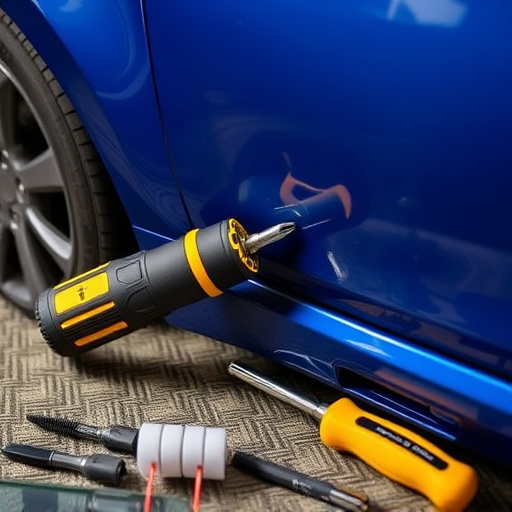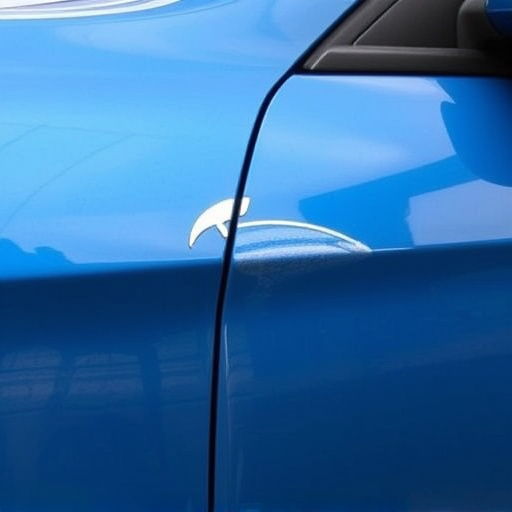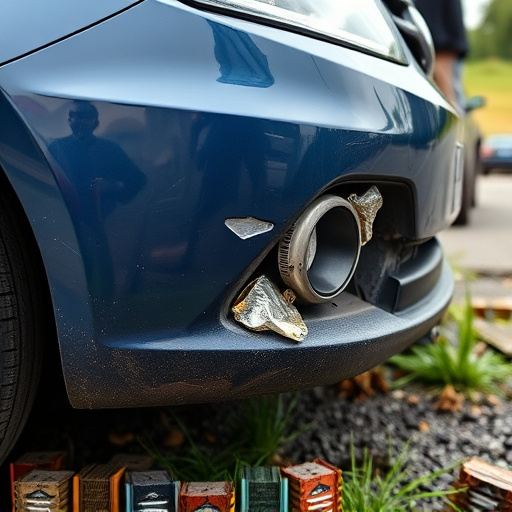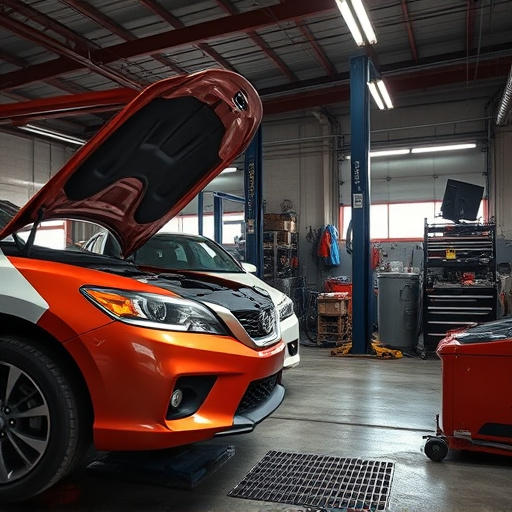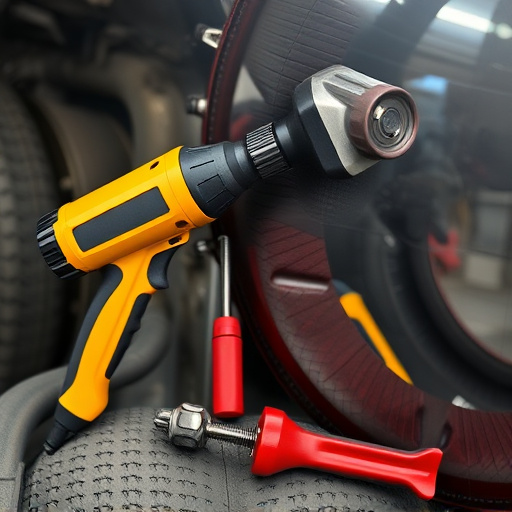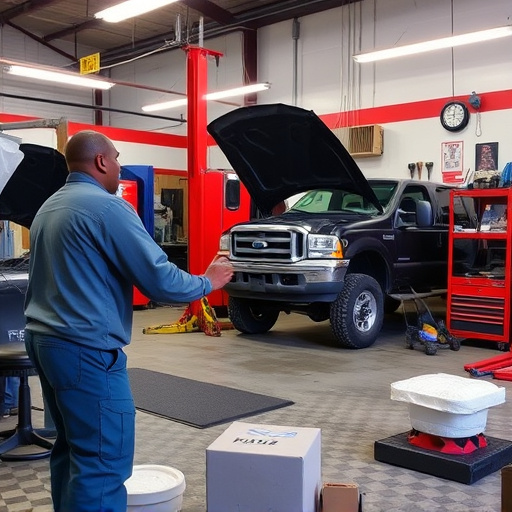After a crash, visually inspect the battery for trauma. If external checks are clear, a technician uses diagnostic tools to assess internal damage and short circuits. This comprehensive process ensures hidden issues are found, guiding informed decisions about necessary battery replacement after crash to enhance safety and reliability. Regular inspections at a car body shop monitor ongoing changes, emphasizing prompt collision repair to mitigate long-term effects on vehicle power systems. Post-crash battery assessments recommend repairs over immediate replacements, focusing on compatibility, performance, and reputable brands for safety.
In the aftermath of a vehicle accident, understanding the impact on your car’s battery is crucial. This comprehensive guide delves into the intricate details of battery damage assessment post-accidents and explores how accidents affect lifespan, both in the short and long term. We provide valuable insights into replacement options, safety considerations, and offer practical advice for those contemplating a battery replacement after a crash, ensuring peace of mind.
- Battery Damage Assessment After Accidents
- Impact on Lifespan: Short-Term and Long-Term Effects
- Replacement Options and Safety Considerations
Battery Damage Assessment After Accidents
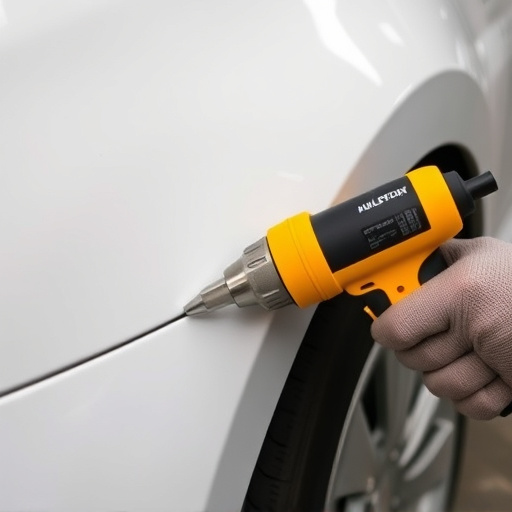
After a crash, assessing battery damage is crucial for ensuring safe operation and preventing potential hazards. The first step in this process involves visually inspecting the battery for any visible signs of trauma, such as cracks, leaks, or swelling. These indications may suggest internal damage that could compromise the battery’s performance and safety.
In cases where external inspection reveals no immediate concerns, further evaluation by a qualified technician is recommended. Specialized diagnostic tools can measure internal resistance, check for short circuits, and assess overall functionality. This detailed collision damage repair process ensures that any hidden issues are identified, allowing for informed decisions regarding battery replacement after a crash, thereby enhancing safety and reliability.
Impact on Lifespan: Short-Term and Long-Term Effects
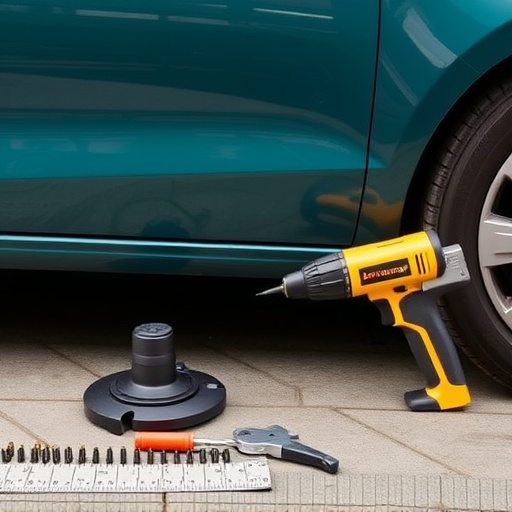
A vehicle accident can significantly impact a car’s battery lifespan, affecting both short-term and long-term performance. In the immediate aftermath of a crash, batteries may suffer damage due to sudden jolts or impacts, leading to potential short circuits or internal structural changes that reduce their ability to hold a charge. These immediate effects can result in a dead battery, requiring urgent replacement during emergency roadside assistance or at a collision repair shop.
Over time, even if the battery appears to have recovered from initial damage, ongoing vibrations and stress from repairs or misalignment in car bodywork can gradually degrade its capacity. Regular trips to a car body shop for inspections are crucial for monitoring these changes, as neglecting potential issues can lead to unexpected failures. Frequent collisions or severe accidents may permanently shorten the battery’s lifespan, underscoring the importance of prompt and thorough collision repair to mitigate long-term effects on vehicle power systems.
Replacement Options and Safety Considerations

After a crash, determining the health of your vehicle’s battery is crucial before considering battery replacement after crash. A post-accident impact can cause internal damage, leading to reduced lifespan or even failure. Professional fleet repair services often recommend assessing the battery first and comparing it with manufacturer guidelines. If the battery shows signs of degradation, auto body services might suggest a replacement as part of your overall vehicle repairs.
Choosing the right replacement involves understanding your needs. While standard auto glass replacement may not be sufficient for modern vehicles, ensuring compatibility and optimal performance is essential. Look for batteries that meet or exceed original equipment manufacturer (OEM) standards. Safety considerations should always be at the forefront: choose reputable brands known for their quality and safety certifications to avoid any potential risks associated with faulty replacements.
In understanding the impact of accidents on battery lifespan, it’s clear that proper assessment and timely replacement are key. The short-term damage from a crash can significantly reduce battery performance, while long-term effects may lead to premature aging. When considering battery replacement after a crash, safety should always be a priority. Opting for high-quality replacements ensures not only optimal functionality but also mitigates potential risks associated with faulty batteries. By staying informed about the latest advancements in battery technology and adhering to safety guidelines, individuals can effectively navigate battery replacement decisions post-accident, ensuring peace of mind and enhanced vehicle performance.


